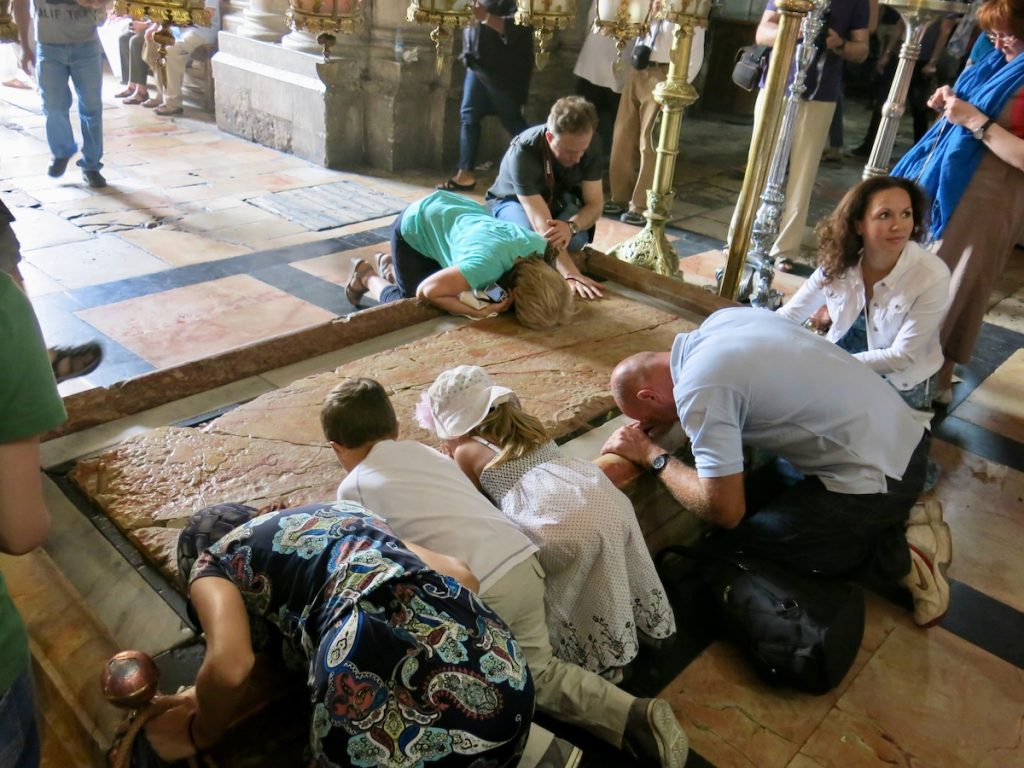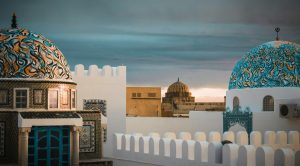Walking in the footsteps of Jesus is a proud rite of passage for many people of the Christian faith who like to travel far and wide.
While there are a lot of options for visiting biblical sites around the world, these chosen holy places for Christianity in Jerusalem stand alone as the most significant parts of the life of Jesus are to be found in Jerusalem; the holiest of cities on earth.
Let’s delve into the spiritual and historical significance of these sites, the overall vibe of each place and most importantly for Christian travellers – tips on how to visit these iconic religious spots.
1. The Church of the Holy Sepulchre
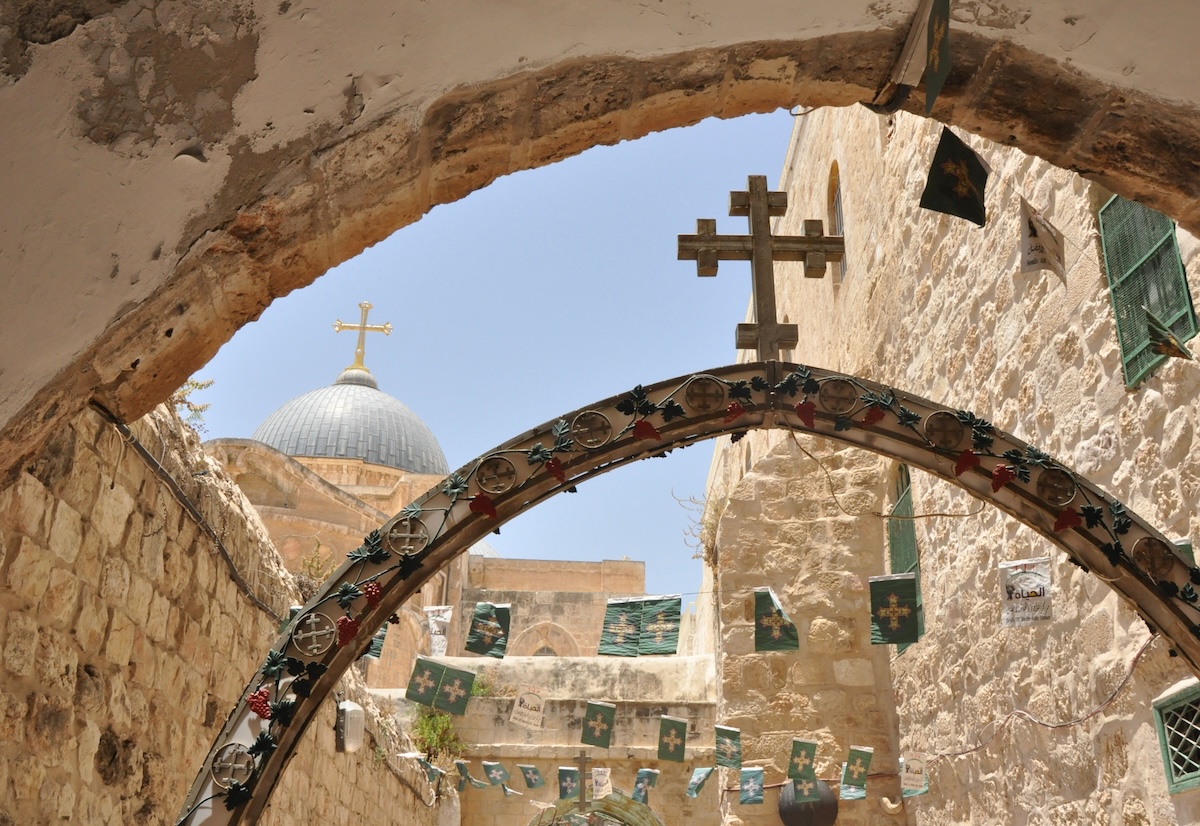
The Church of the Holy Sepulchre, also revered as the “Church of the Resurrection” by Eastern Orthodox Christians, stands as one of the most sacred sites of Christianity.
Located in the heart of Jerusalem’s Old City, this monumental church is traditionally believed to encompass both Golgotha, the site of Jesus Christ’s crucifixion, and his tomb, where he is said to have been buried and resurrected.
Architecturally, the church presents a fascinating blend of various styles due to its long history and the influence of different rulers and Christian denominations over the centuries.
The complex includes several chapels and shrines, each reflecting unique artistic expressions ranging from Romanesque to Byzantine art.
The most notable feature is the Aedicule, a small chapel housing the tomb of Christ, with its elaborate ornamentation and distinctive dome.
Historically, the original church was commissioned by the Roman Emperor Constantine the Great in the 4th century, after his mother, Saint Helena, identified the location.
The church has undergone multiple demolitions and reconstructions over the years due to wars, fires, and earthquakes, contributing to its rich and layered history.
Theologically, the Church of the Holy Sepulchre is a symbol of the Christian faith’s core tenets – the crucifixion, burial, and resurrection of Jesus Christ.
It is a major pilgrimage destination, drawing Christians worldwide to connect with the profound events at the heart of their faith.
For visitors, the best times to visit are during the early mornings or late afternoons to avoid the crowds. (Pssst, make sure to check out these inspiring bible verses about travel to keep you even more connected to your religion whilst on the road).
The church is particularly significant during Easter, especially the Holy Fire ceremony. Pilgrims should respect the solemn nature of the site; modest dress is advised.
For those of the Christian faith, a visit here can be a deeply moving and spiritual experience, offering a tangible connection to the narrative of Jesus Christ’s last days.
2. The Via Dolorosa
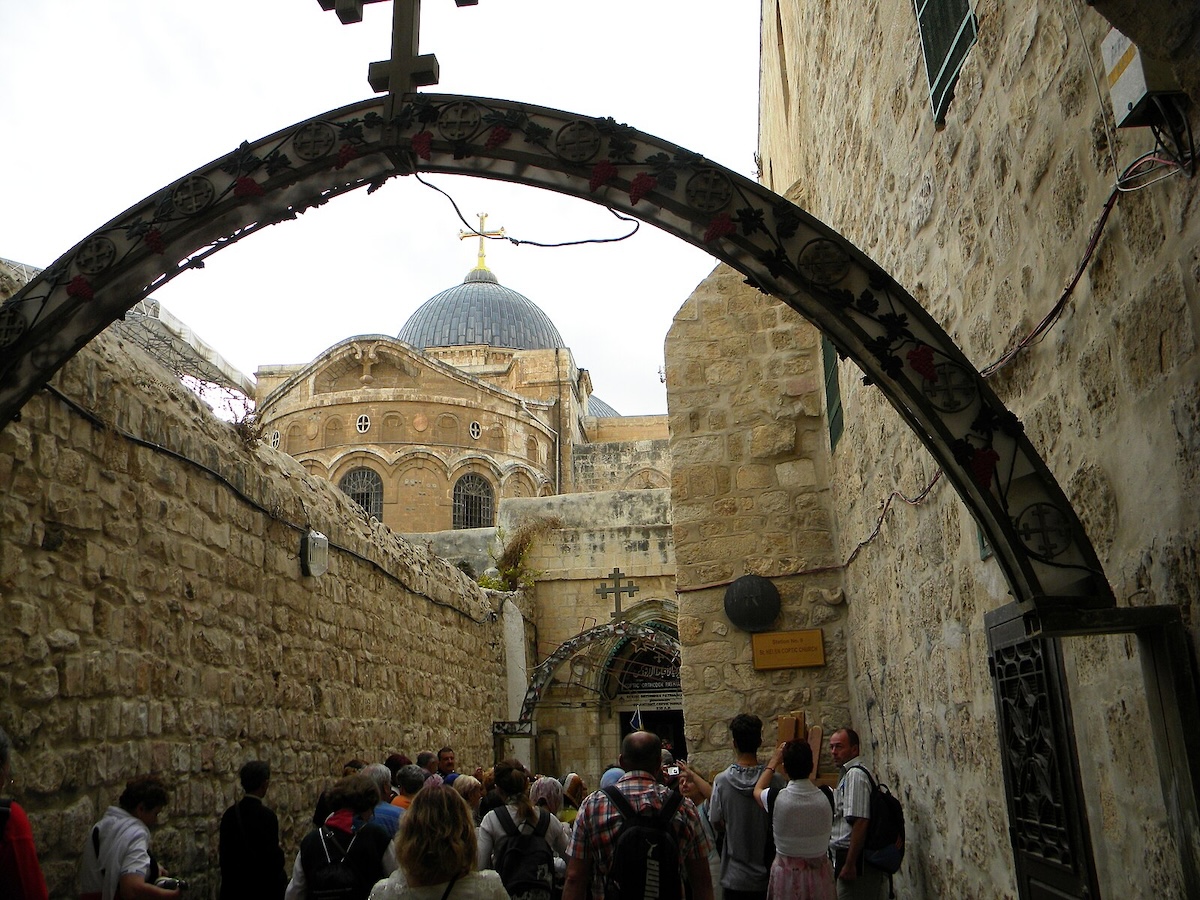
The Via Dolorosa, also known as the “Way of Sorrow” or “Way of the Cross,” is a sacred path in the heart of Jerusalem, deeply revered in Christian tradition.
It is believed to be the route that Jesus Christ took, bearing his cross, on the way to his crucifixion.
This path is a living symbol of Christian faith, embodying the passion and suffering of Christ.
Spanning approximately 600 meters, the Via Dolorosa is marked by fourteen Stations of the Cross, each commemorating specific events from Jesus’ final journey. These stations are not just points on a route but are adorned with various architectural and artistic elements.
From ancient stone pavements, believed to be from Roman times to intricate mosaics and artworks in the chapels and churches along the way, each station offers a unique visual and spiritual experience.
Historically, the exact route and the tradition of the Via Dolorosa evolved over centuries, with the current path being established in the 18th century.
Earlier pilgrims followed various routes, as the identification of the actual path was influenced by changing religious and political circumstances in Jerusalem.
The Via Dolorosa is a poignant manifestation of the Christian narrative of suffering, sacrifice, and redemption.
Walking the Via Dolorosa is a form of devotion, allowing pilgrims to contemplate and reenact Jesus’ path to crucifixion, deepening their spiritual connection to his journey and sacrifice.
For visitors, walking the Via Dolorosa is a profound experience, best undertaken in a contemplative and respectful manner.
Early morning visits are recommended to avoid the crowds. The route is especially significant during Holy Week, particularly on Good Friday, when a large procession retraces Jesus’ steps.
Pilgrims are advised to be prepared for a physically demanding walk, often in a crowded and emotionally charged environment.
This journey offers an unparalleled opportunity for Christians to engage intimately with a central aspect of their faith.
3. Mount of Olives
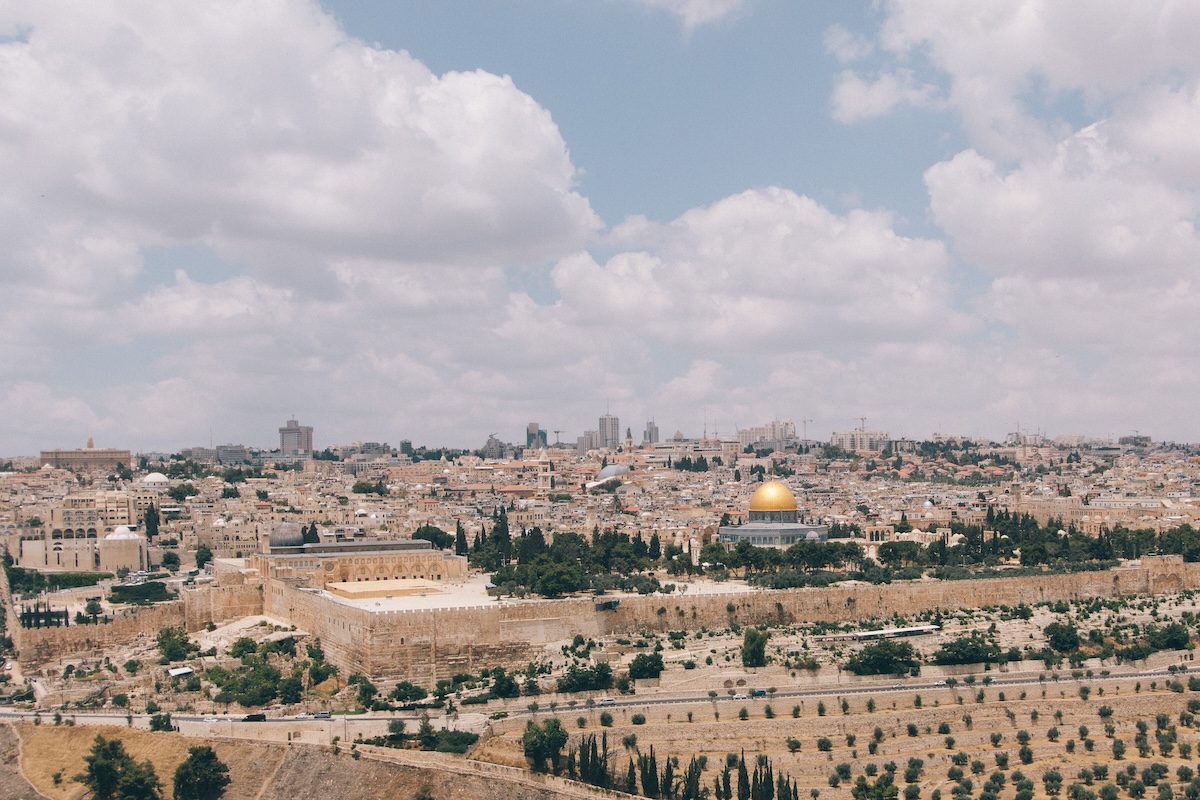
The Mount of Olives, a ridge east of Jerusalem’s Old City, holds immense religious significance, particularly for Christians.
Its historical and theological importance is deeply rooted in Christian narratives.
The Mount of Olives is home to several key religious sites, each featuring unique architectural and artistic elements.
Notable among these are the Church of the Ascension, with its elegant Byzantine architecture, and the Church of All Nations, also known as the Basilica of the Agony, famed for its stunning mosaics and the striking mosaic façade depicting Jesus Christ in the Garden of Gethsemane.
Historically, the Mount has been a site of Jewish burial for over 3,000 years, with approximately 150,000 graves. Its significance in Christian history is highlighted in the New Testament, where it is mentioned as the place where Jesus often prayed, and later, where he wept over Jerusalem.
The Mount of Olives is revered as the site of key events in Jesus’ life, including his ascension to heaven.
It also holds eschatological significance in Christian eschatology as the place where it is believed Jesus will return during the Second Coming.
For visitors, the Mount of Olives offers a serene and contemplative environment. The best times to visit are during spring and autumn when the weather is mild.
The Mount is also a vantage point for panoramic views of Jerusalem, making it a popular spot for both pilgrims and tourists seeking both spiritual and travel experiences.
4. Gethsemane
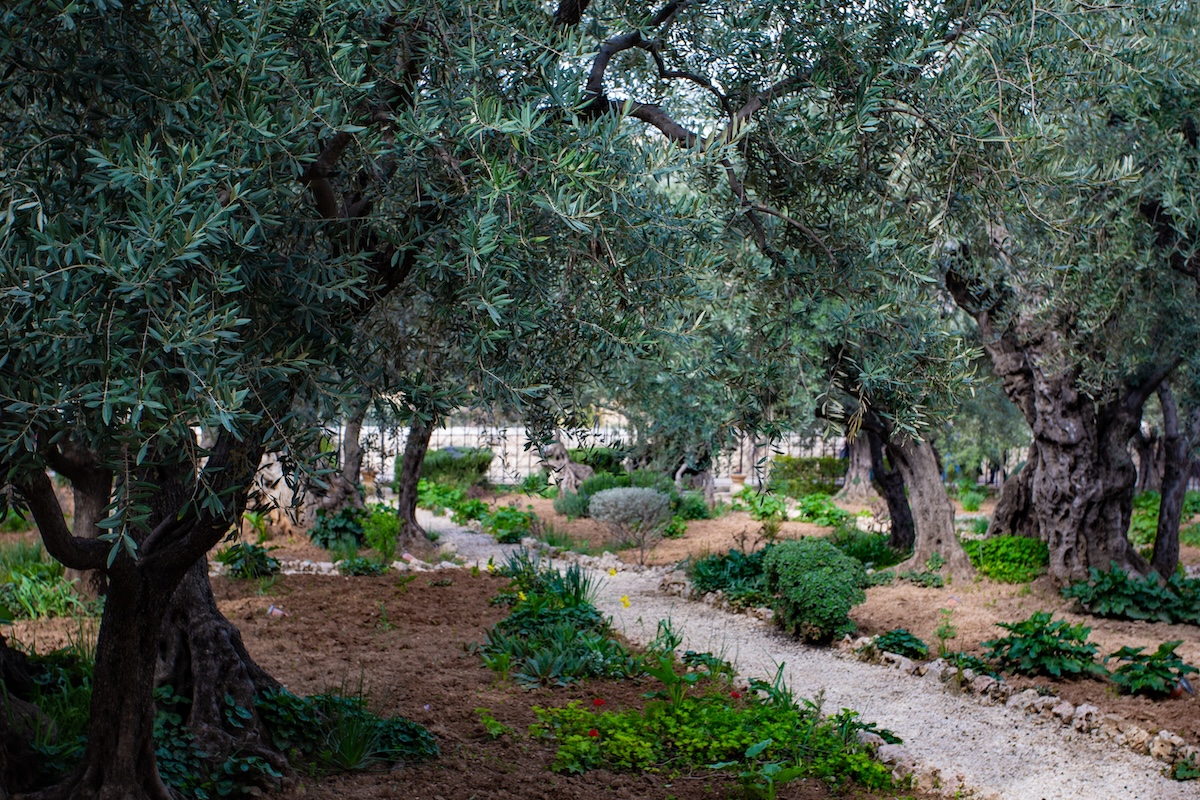
Gethsemane, an ancient olive grove at the foot of the above-mentioned Mount of Olives.
It unfairly is left out quite often when discussing holy Christian sites in Jerusalem – Gethsemane is etched in the Christian narrative as the place of Jesus’ agony and prayer before his arrest.
The area is characterized by ancient olive trees, some dating back centuries, creating a serene and contemplative atmosphere.
Gethsemane is first mentioned in the New Testament as the garden where Jesus prayed on the night of his arrest. This garden has been a place of Christian worship and pilgrimage since the early Byzantine era.
Theologically, Gethsemane is significant as the site of Jesus’ profound emotional and spiritual anguish, where he experienced deep sorrow and prayed before his betrayal and crucifixion.
This event is central to the Christian understanding of Jesus’ humanity and divine mission.
For visitors, Gethsemane offers a unique blend of spiritual reflection and historical exploration.
The best times to visit are during the morning or late afternoon to avoid crowds.
Gethsemane is often quieter than other religious sites in Jerusalem, making it ideal for those seeking a more personal and meditative experience.
5. The Room of the Last Supper (Cenacle)
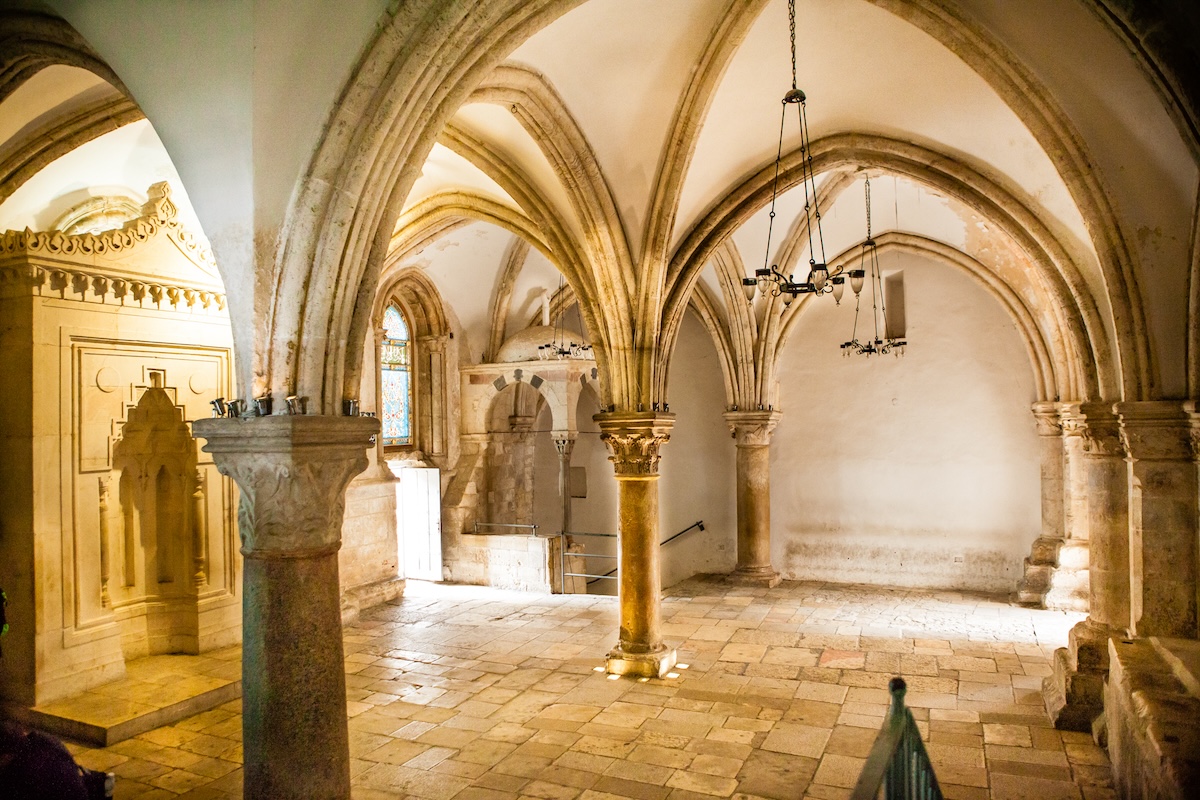
The Room of the Last Supper, often referred to as the Cenacle is a revered site located on Mount Zion in Jerusalem.
This historic room is traditionally believed to be the site where Jesus shared his final meal with his disciples before his crucifixion, an event central to Christian theology.
The Cenacle’s architecture is a blend of Gothic and Romanesque styles, reflective of its varied history. The room is part of a two-story building that also includes the Tomb of David, a site significant in Jewish tradition.
The Cenacle’s simple, yet evocative design features ribbed vaults and remains largely unadorned, focusing on the spiritual significance of the space rather than elaborate decoration.
The existing structure dates back to the Crusader period, although it has been modified over the centuries.
The site’s identification as the location of the Last Supper has been a matter of tradition since the fourth century, and it has been a destination for Christian pilgrims throughout the ages.
The Cenacle is profoundly significant in Christian accounts as the site of the Last Supper, where Jesus instituted the Eucharist and washed the feet of his disciples.
This event symbolizes Jesus’ teachings on service, sacrifice, and the new covenant between God and humanity.
Visitors to the Cenacle will find it a place of quiet reflection and historical intrigue. While the Cenacle does not host specific festivals, it remains a poignant stop for pilgrims and travelers, especially during Holy Week, when the Last Supper’s events are commemorated worldwide.
The site’s atmosphere provides a unique opportunity to contemplate one of Christianity’s most significant and intimate moments.
6. Church of All Nations
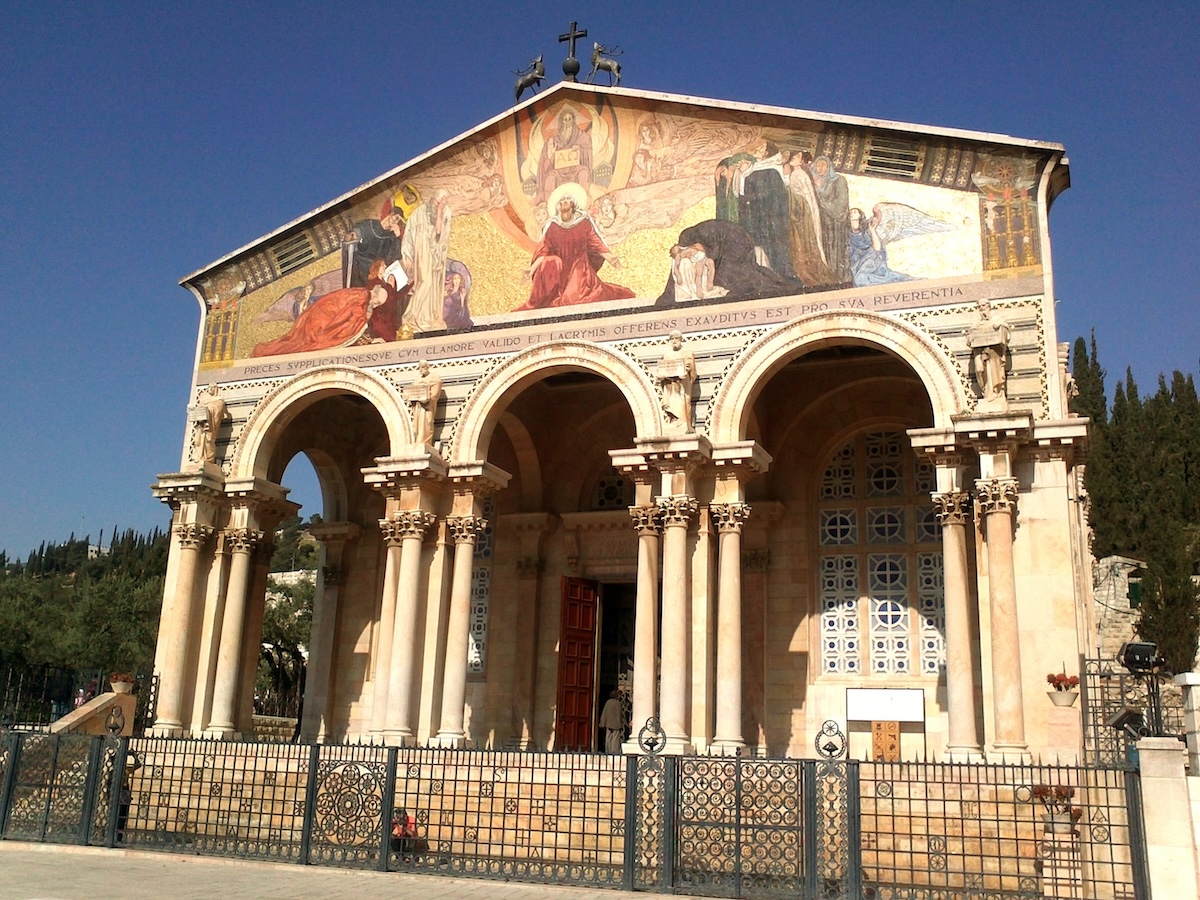
The Church of All Nations, also known as the Basilica of the Agony, is a significant Christian site located at the foot of the aforementioned Mount of Olives in Jerusalem, adjacent to the Garden of Gethsemane.
Architecturally, the Church of All Nations is a stunning example of modern Byzantine design. Consecrated in 1924, it was built over the ruins of two earlier churches.
The façade is adorned with a striking mosaic depicting Christ as the link between God and humanity. The interior is notable for its somber atmosphere, created by the deep blue ceilings adorned with golden stars and the alabaster windows that allow in a soft, diffused light.
This design choice reflects the mood of sorrow and contemplation associated with the events commemorated here as the site’s historical significance is rooted in the belief that this is where Jesus prayed on the night of his arrest, an event depicted in the New Testament.
The rock over which the church is built is said to be where Jesus prayed in agony before his crucifixion.
The Church of All Nations is important as it commemorates the human anguish and divine obedience of Jesus, representing his emotional and spiritual struggle.
This aspect is central to understanding Jesus’ sacrifice in the Christian faith.
For visitors, the Church of All Nations offers a profound spiritual place of deep religious significance.
It provides a unique opportunity for reflection and prayer, especially significant for those of the Christian faith seeking to deepen their understanding of Jesus’ final hours.
7. The Pool of Bethesda
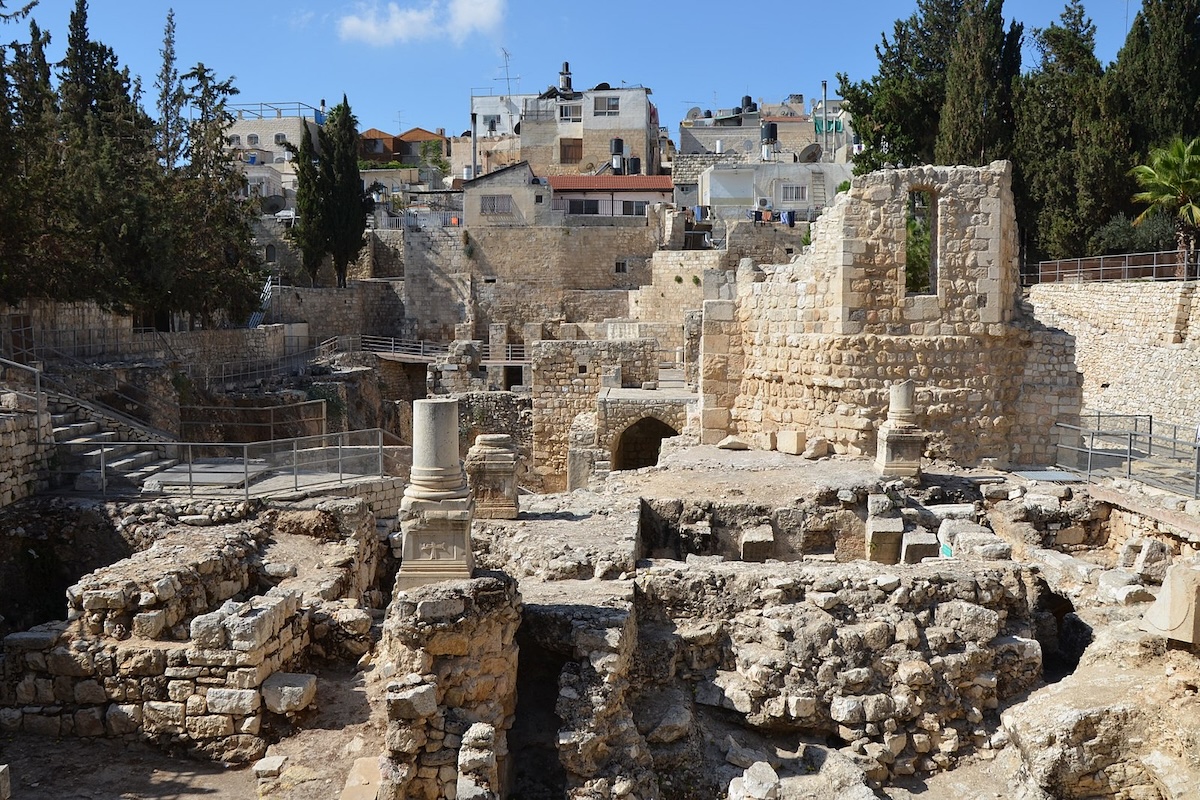
The Pool of Bethesda, located in Jerusalem near the Church of Saint Anne, is a site of great historical and religious significance, particularly in Christian tradition.
This ancient pool is mentioned in the New Testament, specifically in the Gospel of John, wherein it is described as having healing powers.
Architecturally, the Pool of Bethesda is part of an archaeological site that includes remains from the Roman and Byzantine periods.
The site comprises two large pools, surrounded by columns and porticoes, which were part of a complex used for healing in ancient times. The ruins provide a vivid glimpse into the architectural styles and urban planning of the period.
Historically, the Pool of Bethesda was originally constructed as a reservoir in the 8th century BC and was later developed into a place of healing by the Romans. The site’s connection to Christian history is established through the New Testament account, where Jesus is said to have healed a paralytic man at this location.
The Pool of Bethesda is significant in Christianity as a symbol of Jesus’ miraculous powers and his compassion for the sick and marginalized.
The healing of the paralysed man underscores themes of hope, renewal, and the transformative power of faith.
For visitors, the Pool of Bethesda offers a chance to connect with an ancient biblical site and reflect on its historical and spiritual significance.
The best times to visit are during the early morning when it’s less crowded. Visitors are encouraged to approach the site with a sense of reverence, keeping in mind its religious and historical context.
The archaeological nature of the site demands respectful exploration, and visitors should be prepared for outdoor conditions. As a place of biblical importance, it provides a meaningful experience for those interested in the confluence of history, archaeology, and faith.
Visiting These Holy Places For Christianity in Jerusalem
If you are a Christian who has a love for travel as well as God, I hope after reading about these sacred sites of Christianity that you have confidence in the fact that these places are within reach for you to visit and pay homage to your belief.
All paths lead to Jerusalem for your ultimate Christian pilgrimage and the good news is that once you’re there – all of these places are in a highly concentrated area, with (Google) flocking to Israel every year to pay tribute to your religion.
Sometimes it can seem daunting, but with the correct planning and the right about of faith, the only regret that you will have for not visiting these holy places for Christianity in Jerusalem is that you didn’t do it sooner!

